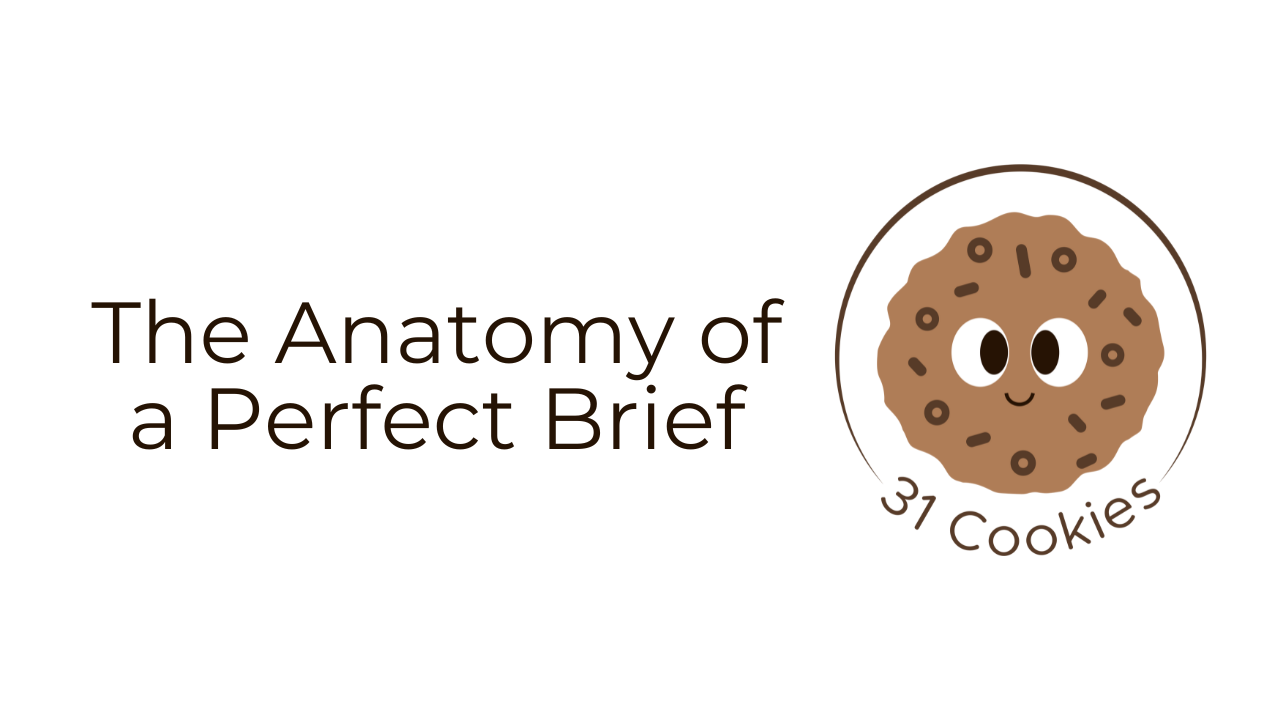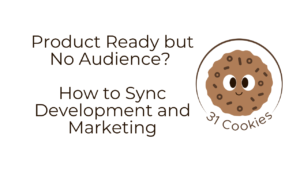In my five years in the content industry, I’ve seen it all: the one-liner briefs (‘Write something about cloud security’), the 12-page manifestos that make War and Peace look concise, and everything in between. At 31 Cookies, we’ve learned that the perfect brief is all about intention.
Think of a content brief like a recipe for your favorite cookie. Too vague (‘add some sugar’), and you’ll never get consistent results. Too rigid (‘precisely 237 grains of salt’), and you’ll kill creativity.
So what makes a truly great brief? Let me show you. 👀
The Brief Brief Problem
Most content briefs I encounter are either far too sparse or overwhelmingly detailed without focusing on what actually matters. The perfect brief exists in that sweet spot between guidance and creative freedom. 🎨
A great brief should inspire writers to create something remarkable. It should provide clear parameters without stifling creativity. And most importantly, it should set up both the writer and the content for success.
Elements of the Perfect Content Brief
After refining hundreds of briefs and seeing what consistently produces exceptional content, I’ve identified these core elements every brief needs:
1. Crystal clear objectives
Every brief needs to answer the fundamental question: ‘Why are we creating this content?’
Is it to drive signups for a demo? Position your company as a thought leader? Educate customers about a new feature? The objective shapes everything else.
I always include both the business objective and the reader objective. What do we want the reader to do after engaging with this content? What should they walk away understanding or feeling?
2. Audience intelligence
Generic audience descriptions like ‘CTOs at mid-size companies’ aren’t enough. Your brief should include:
- The specific pain points this audience is experiencing
- Their level of awareness about the problem and solution
- Common objections they typically have
- Language they use when discussing this topic
- Questions they’re asking (verbatim from support tickets, sales calls, etc.)
This depth of audience understanding transforms generic content into something that feels tailor-made for the reader.
3. Contextual positioning
Where does this content fit in the buyer’s journey? How does it relate to other content you’ve published? Is it part of a larger campaign or initiative?
Content doesn’t exist in isolation, and your brief shouldn’t either.
I always include notes about related content, how this piece fits into our overall strategy, and what content should naturally follow this piece.
4. Competitive intelligence
What’s already been published on this topic? What’s missing from the conversation? How can we genuinely add value instead of creating more noise?
I always include links to the top 3-5 competing pieces of content so the writer knows what they’re up against. Not to copy, but to surpass. I recommend adding specific notes on:
- What these pieces do well (so you don’t reinvent the wheel)
- Where they fall short (your opportunity to shine)
- The unique angle you can take that nobody else has explored
- Which insights are table stakes vs. which ones will make your content stand out
5. Subject matter expert access
Every brief should clarify who the writer can speak with to gather deeper insights. This might be internal experts, customers willing to be interviewed, or other resources that can provide unique perspectives.
🍪 The 31 Cookies Approach
At 31 Cookies, we’ve developed a framework for briefs that consistently delivers exceptional content. Our approach is built on the understanding that the perfect brief, like the perfect cookie recipe, needs precise ingredients in the right proportions—but also leaves room for the baker’s touch.
Our methodology centers around three primary elements and one secret ingredient that make up our agency’s philosophy:
The 3 Primary Elements
- Structure: The architectural framework for the content (key sections, word counts, must-include elements)
- Substance: The informational core (key points, data, examples, quotes)
- Style: The tone, voice, and presentation approach
The 1 Secret Ingredient: Whitespace
Every great brief needs intentional whitespace—areas where you deliberately leave room for the writer’s expertise and creativity to shine. Without this breathing room, you’re not commissioning content; you’re ordering a transcription.
I designate specific sections where I want the writer to surprise me, to bring their unique perspective or approach. This is where truly differentiated content emerges.
Common Pitfalls to Avoid
After hundreds of briefs, I’ve identified these common mistakes:
- Overemphasis on SEO at the expense of quality: Yes, keyword research matters, but not at the expense of readability and value
- Conflicting objectives: Trying to make one piece of content do too many things
- Ignoring the competitive landscape: Not researching what’s already out there
- Providing examples that contradict your guidance: Make sure your reference materials align with what you’re asking for
- Too many cooks: Having too many stakeholders providing input without clear prioritization
Integrating Your Brief Process
A great brief thrives when embedded in your broader content operations. At 31 Cookies, we’ve discovered that the brief is just one component of a connected ecosystem.
To maximize its impact, consider:
- Brief ownership: Designate a single ‘brief owner’ who serves as the connective tissue between stakeholders
- Brief evolution: Treat briefs as living documents. Schedule brief reviews before sharing them with writers to address questions and share new insights
- Brief metrics: Track which briefs consistently produce high-performing content. What did they have in common? Use this data to refine your briefing process
- Brief feedback loops: After content is published, revisit the brief with your writer. What helped them? What confused them? What was missing? This retrospective improves future briefs
The Brief Case for Better Content
I’ve come to view the brief as the most underutilized strategic asset in content marketing.
The best briefs invite collaboration. They don’t dictate; they direct. They provide boundaries that foster creativity rather than constrain it.
If you’re serious about elevating your content program, start with your briefs. They’re the blueprint from which everything else is built—and like any good blueprint, the details matter.
Your content can only be as good as the brief that guides it. Make yours count by creating clear, strategic content with 31 Cookies.
Contact us today. 🫱🏼🫲🏽








